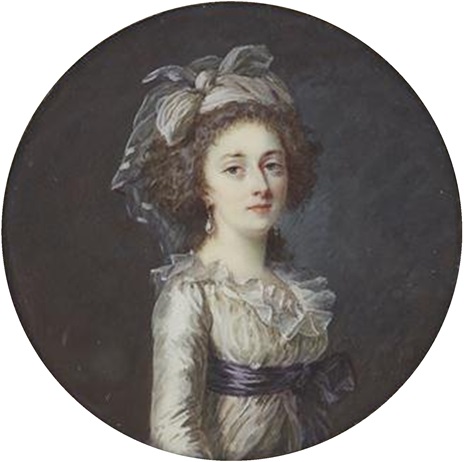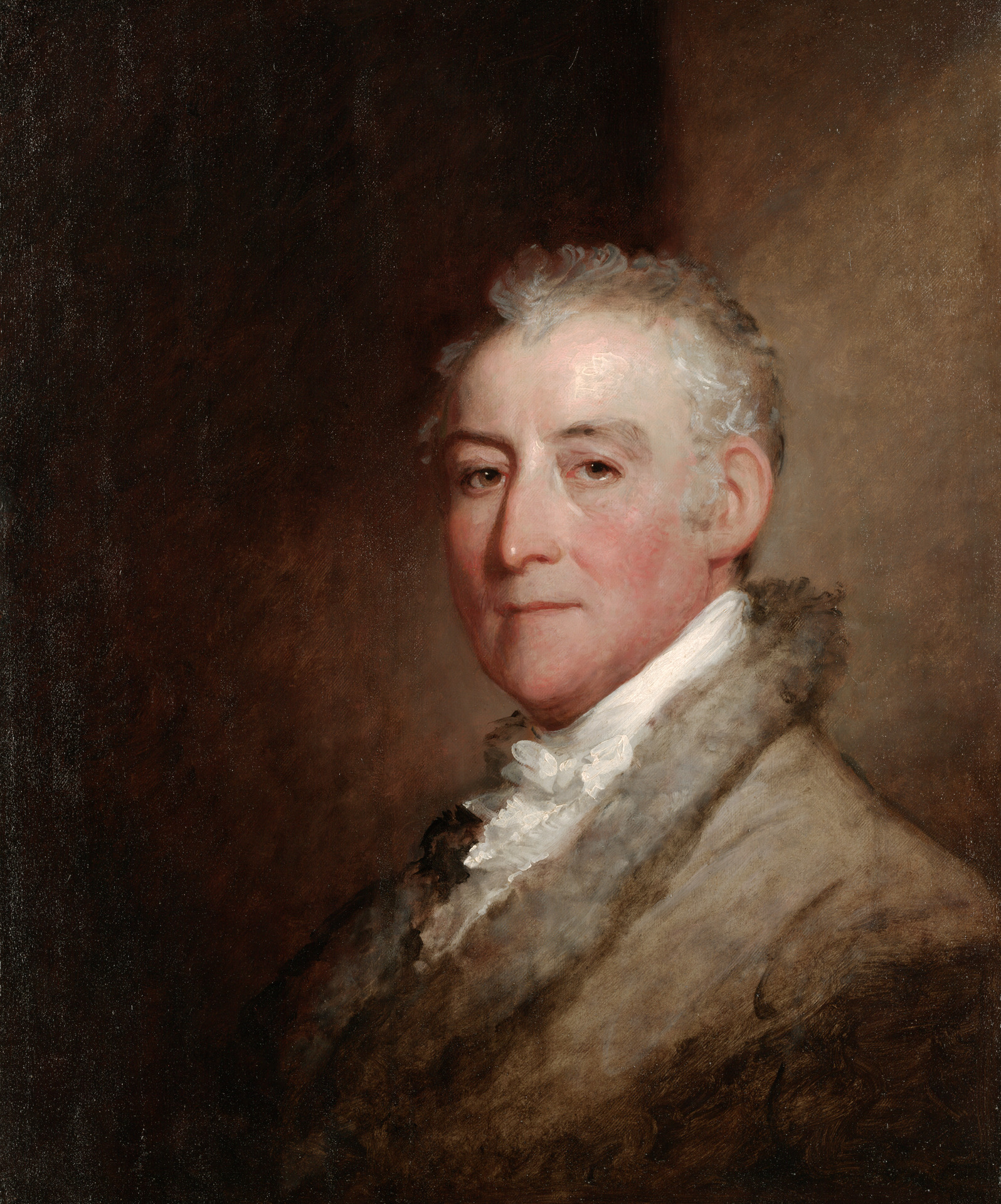|
Marie-Marguerite Carreaux De Rosemond
Marie-Marguerite Carreaux de Rosemond, sometimes Carraux de Rozemont (died 1788) was a French painter. Carreaux de Rosemond was a pupil of Adélaïde Labille-Guiard, one of the nine young women whose work was remarked upon at the Expositions de la jeunesse; she was singled out for praise by the critics alongside Marie-Gabrielle Capet and Mlle. Alexandre, and she and Capet were the two pupils chosen to be depicted in their teacher's '' Self-Portrait with Two Pupils'', now in the Metropolitan Museum of Art. She may also be seen in a pen-and-ink sketch drawn by John Trumbull on a visit to Labille-Guiard's studio in 1786. Carreaux de Rosemond married engraver Charles Clément Balvay in 1788, but she died later that same year in the galleries of the Louvre The Louvre ( ), or the Louvre Museum ( ), is the world's most-visited museum, and an historic landmark in Paris, France. It is the home of some of the best-known works of art, including the ''Mona Lisa'' and the ''Venus de ... [...More Info...] [...Related Items...] OR: [Wikipedia] [Google] [Baidu] |
Adélaïde Labille-Guiard
Adélaïde Labille-Guiard (née Labille; 11 April 1749 – 24 April 1803), also known as Adélaïde Labille-Guiard des Vertus, was a French miniaturist and portrait painter. She was an advocate for women to receive the same opportunities as men to become great painters. Labille-Guiard was one of the first women to become a member of the Royal Academy, and was the first female artist to receive permission to set up a studio for her students at the Louvre.Auricchio. Studies Labille-Guiard became a master at miniatures, pastels, and oil paintings. Little is known about her training due to the practices of the 18th century which dictated masters (who were predominately male) should not take on female pupils. During this time, women were perceived as incapable to follow instruction alongside men. During her adolescence, Labille-Guiard studied miniature painting with oil painter François-Élie Vincent and her early work was exhibited at the Académie de Saint-Luc. She apprenticed ... [...More Info...] [...Related Items...] OR: [Wikipedia] [Google] [Baidu] |
Expositions De La Jeunesse
{{disambig ...
Exposition (also the French for exhibition) may refer to: *Universal exposition or World's Fair *Expository writing **Exposition (narrative) *Exposition (music) *Trade fair * ''Exposition'' (album), the debut album by the band Wax on Radio *Expository preaching See also *Expo (other) *Expose (other) *Expos The Montreal Expos (french: link=no, Les Expos de Montréal) were a Canadian professional baseball team based in Montreal, Quebec. The Expos were the first Major League Baseball (MLB) franchise located outside the United States. They played in t ... [...More Info...] [...Related Items...] OR: [Wikipedia] [Google] [Baidu] |
Marie-Gabrielle Capet
Marie-Gabrielle Capet (6 September 1761 – 1 November 1818) was a French Neoclassical painter. She was born in Lyon on 6 September 1761. Capet came from a modest background and her previous background and artistic training is unknown, but in 1781 she became the pupil of the French painter Adélaïde Labille-Guiard in Paris. She excelled as a portrait painter and her works include oil paintings, watercolours, and miniatures. Life Marie-Gabrielle Capet was born in Lyon in 1761. In her youth, Capet attended a public drawing school located in her town. In eighteenth-century France, the Royal Academy of Art was responsible for training artists and exhibiting artworks at the Salon that glorified heroic values promoted by the Bourbon monarchy. Until the French Revolution, the Royal Academy of Art in Paris was the central institution for official artistic practice, and limited its number of female students to four at a time. In 1781, twenty-year-old Capet moved to Paris to become t ... [...More Info...] [...Related Items...] OR: [Wikipedia] [Google] [Baidu] |
Self-Portrait With Two Pupils
''Self-Portrait with Two Pupils, Marie-Gabrielle Capet and Marie Marguerite Carreaux de Rosemond'' is a 1785 self-portrait painting by Adélaïde Labille-Guiard depicting the artist with two of her pupils, Marie-Gabrielle Capet and Marie-Marguerite Carreaux de Rosemond. It is in the collection of the Metropolitan Museum of Art. Early history and creation Labille-Guiard was born in Paris on 11 April 1749, the youngest of eight children. She grew up in a neighbourhood of artists and, on her own initiative, began painting and receiving training from them. She began to take students of her own in 1780. They were all female, and she was an advocate for women's involvement in painting. Labille-Guiard spent time planning this painting and there is a chalk study by Labille-Guiard of the two heads of her students where she investigates the closeness of the students heads and the effect of the light. The figure on the left, Marie-Gabrielle Capet, was one of the most talented students and ... [...More Info...] [...Related Items...] OR: [Wikipedia] [Google] [Baidu] |
Metropolitan Museum Of Art
The Metropolitan Museum of Art of New York City, colloquially "the Met", is the largest art museum in the Americas. Its permanent collection contains over two million works, divided among 17 curatorial departments. The main building at 1000 Fifth Avenue, along the Museum Mile on the eastern edge of Central Park on Manhattan's Upper East Side, is by area one of the world's largest art museums. The first portion of the approximately building was built in 1880. A much smaller second location, The Cloisters at Fort Tryon Park in Upper Manhattan, contains an extensive collection of art, architecture, and artifacts from medieval Europe. The Metropolitan Museum of Art was founded in 1870 with its mission to bring art and art education to the American people. The museum's permanent collection consists of works of art from classical antiquity and ancient Egypt, paintings, and sculptures from nearly all the European masters, and an extensive collection of American ... [...More Info...] [...Related Items...] OR: [Wikipedia] [Google] [Baidu] |
John Trumbull
John Trumbull (June 6, 1756November 10, 1843) was an American artist of the early independence period, notable for his historical paintings of the American Revolutionary War, of which he was a veteran. He has been called the "Painter of the Revolution". Trumbull's '' Declaration of Independence'' (1817), one of his four paintings that hang in the United States Capitol rotunda, is used on the reverse of the current United States two-dollar bill. Early life Trumbull was born in Lebanon, Connecticut, in 1756, to Jonathan Trumbull and Faith (née Robinson) Trumbull. His father served as governor of Connecticut from 1769 to 1784. Both sides of his family were descended from early Puritan settlers in the state. He had two older brothers, Joseph Trumbull, the first commissary general of the Continental Army in the Revolutionary War, and Jonathan Trumbull Jr., who became the second Speaker of the House of the United States. The young Trumbull entered the 1771 junior class at Har ... [...More Info...] [...Related Items...] OR: [Wikipedia] [Google] [Baidu] |
Charles Clément Balvay
Charles Clément Balvay (23 May 1756, Paris – 23 March 1822, Paris), known as Bervic, was a French engraver mainly working in intaglio and exclusively in burin. Due to an error in transcribing the baptismal register, he is also now known as Jean Guillaume Balvay. He served his first apprenticeship under Jean-Baptiste Le Prince, then left aged 14 for the studio of the engraver Jean-Georges Wille. When he was 18, he won first prize for drawing at the Académie royale de peinture et de sculpture, of which he was elected a member in 1784. He became a member of the ''Classe de Beaux-Arts'' (Fine Arts Section) of the Institut Impérial de France in 1803 and authored the chapter on engraving for the Institut's reports to the Emperor in 1808 on the progress of the arts, literature and sciences since 1789. He won many prizes and his drawing talents were particularly appreciated. In 1809, Balvay was elected an associate member, fourth class, of the Royal Institute of the Netherlands ... [...More Info...] [...Related Items...] OR: [Wikipedia] [Google] [Baidu] |
Louvre
The Louvre ( ), or the Louvre Museum ( ), is the world's most-visited museum, and an historic landmark in Paris, France. It is the home of some of the best-known works of art, including the ''Mona Lisa'' and the ''Venus de Milo''. A central landmark of the city, it is located on the Right Bank of the Seine in the city's 1st arrondissement (district or ward). At any given point in time, approximately 38,000 objects from prehistory to the 21st century are being exhibited over an area of 72,735 square meters (782,910 square feet). Attendance in 2021 was 2.8 million due to the COVID-19 pandemic, up five percent from 2020, but far below pre-COVID attendance. Nonetheless, the Louvre still topped the list of most-visited art museums in the world in 2021."The Art Newspaper", 30 March 2021. The museum is housed in the Louvre Palace, originally built in the late 12th to 13th century under Philip II. Remnants of the Medieval Louvre fortress are visible in the basement ... [...More Info...] [...Related Items...] OR: [Wikipedia] [Google] [Baidu] |
Year Of Birth Unknown
A year or annus is the orbital period of a planetary body, for example, the Earth, moving in its orbit around the Sun. Due to the Earth's axial tilt, the course of a year sees the passing of the seasons, marked by change in weather, the hours of daylight, and, consequently, vegetation and soil fertility. In temperate and subpolar climate, subpolar regions around the planet, four seasons are generally recognized: spring (season), spring, summer, autumn and winter. In tropics, tropical and subtropics, subtropical regions, several geographical sectors do not present defined seasons; but in the tropics#Seasons and climate, seasonal tropics, the annual wet season, wet and dry seasons are recognized and tracked. A calendar year is an approximation of the number of days of the Earth's orbital period, as counted in a given calendar. The Gregorian calendar, or modern calendar, presents its calendar year to be either a common year of 365 days or a leap year of 366 days, as do t ... [...More Info...] [...Related Items...] OR: [Wikipedia] [Google] [Baidu] |
1788 Deaths
Events January–March * January 1 – The first edition of ''The Times'', previously ''The Daily Universal Register'', is published in London. * January 2 – Georgia ratifies the United States Constitution, and becomes the fourth U.S. state under the new government. * January 9 – Connecticut ratifies the United States Constitution, and becomes the fifth U.S. state. * January 18 – The leading ship (armed tender HMS ''Supply'') in Captain Arthur Phillip's First Fleet arrives at Botany Bay, to colonise Australia. * January 22 – the Congress of the Confederation, effectively a caretaker government until the United States Constitution can be ratified by at least nine of the 13 states, elects Cyrus Griffin as its last president.''Harper's Encyclopaedia of United States History from 458 A. D. to 1909'', ed. by Benson John Lossing and, Woodrow Wilson (Harper & Brothers, 1910) p167 * January 24 – The La Perouse expedition in the '' Astrolabe'' and '' Boussol ... [...More Info...] [...Related Items...] OR: [Wikipedia] [Google] [Baidu] |
18th-century French Painters
The 18th century lasted from January 1, 1701 ( MDCCI) to December 31, 1800 ( MDCCC). During the 18th century, elements of Enlightenment thinking culminated in the American, French, and Haitian Revolutions. During the century, slave trading and human trafficking expanded across the shores of the Atlantic, while declining in Russia, China, and Korea. Revolutions began to challenge the legitimacy of monarchical and aristocratic power structures, including the structures and beliefs that supported slavery. The Industrial Revolution began during mid-century, leading to radical changes in human society and the environment. Western historians have occasionally defined the 18th century otherwise for the purposes of their work. For example, the "short" 18th century may be defined as 1715–1789, denoting the period of time between the death of Louis XIV of France and the start of the French Revolution, with an emphasis on directly interconnected events. To historians who expand ... [...More Info...] [...Related Items...] OR: [Wikipedia] [Google] [Baidu] |







